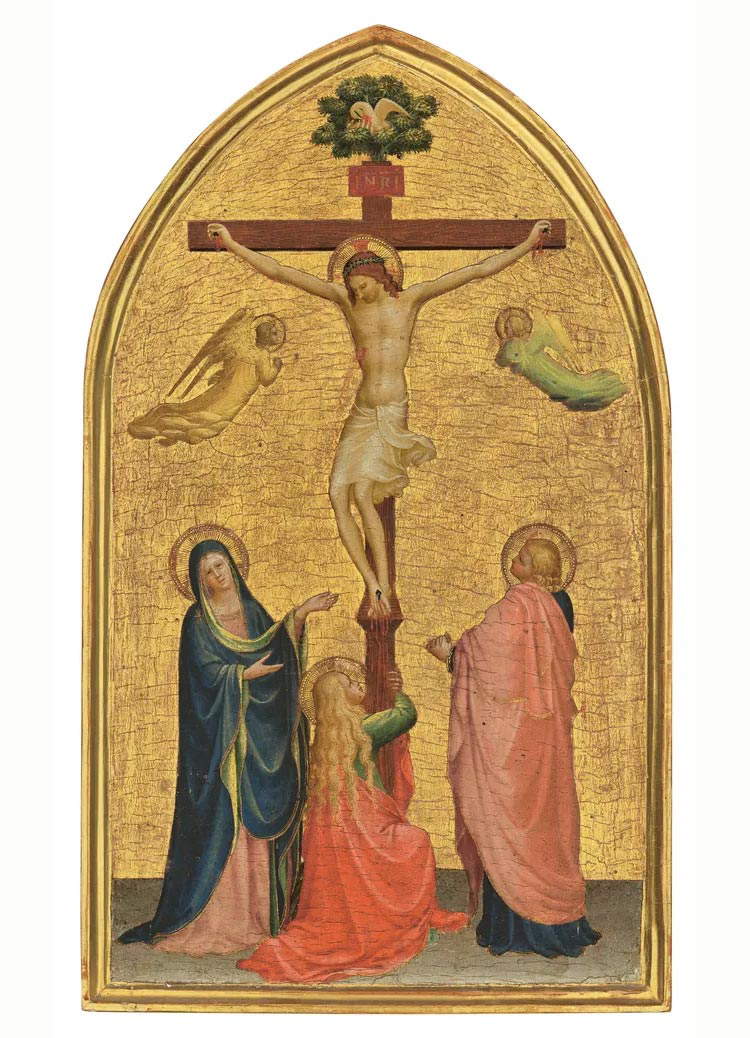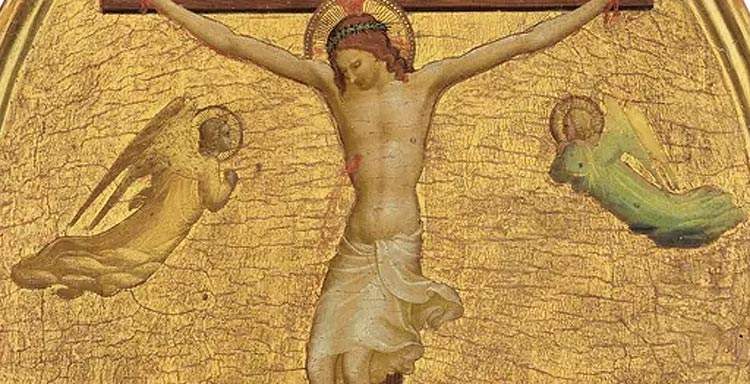UK blocks the export of Beato Angelico's Crucifixion
The United Kingdom has blocked the export of Beato Angelico’s rare early Crucifixion , a masterpiece discovered and published in Burlington Magazine in 1996 by Francis Russell, and which went up for auction this summer at Sotheby’s, where the work fetched £5 million (5.8 million euros) from an estimate of 4-6 million. The youthful panel was described by Angelo Tartuferi, one of the leading experts on the Renaissance artist, as an “absolute and indisputable masterpiece of Fra Angelico’s early phase, yet not belonging to the small nucleus of his early works.” The work stands out for its luminous colors and refined composition.Dated in the early 1520s, the Crucifixion shows how Fra Angelico placed himself within the intense period of creative innovation that characterized early 15th-century Florence, when artists were developing new forms of expression.
The export freeze, following the application for a license by the individual who bought the work from Sotheby’s, was placed by the British Minister for Arts and Heritage, Stephen Parkinson, because the work is in danger of leaving the United Kingdom unless a British individual can be found who is interested in buying it. The minister’s decision follows the opinion of the Review Commission on the Export of Works of Art and Objects of Cultural Interest (RCEWA). “This beautiful work by such an important figure of the early Renaissance,” said Lord Parkinson, “represents a key moment in the history of European painting. It has been in the UK for two centuries and I hope a national buyer will come forward so that it can remain here to be studied and admired for generations to come.”

Executed in tempera on wood panel, the painting retains its original frame and has been in Britain since the early 19th century. The first known owner was Lady Ashburton, who received the work as an inheritance from her husband, William Bingham Baring, according to Lord Ashburton (he probably bought the work on the Italian market). The Crucifixion then passed to Lady Ashburton’s daughter (who had to keep the work either in her London home or in her residence at Melchett Court in Hampshire), Mary Florence Baring, wife of William Compton, and from her to their second son, Lord Spencer Compton (1893-1915): from the latter the work came by descent to the owners who auctioned it last summer.
The painting would, British authorities point out, be an important addition to the UK’s public collection. The RCEWA made its recommendation on the basis that the painting met the second and third Waverley criteria. The Waverley criteria are parameters that are used in the United Kingdom to figure out whether an object should be considered a national treasure and whether its departure from the national territory could be a miss for the community. The first criterion should determine whether the work is closely related to the nation’s history. The second if the work is of exceptional aesthetic importance. The third if it is exceptional for the study of some particular area of art or history. Beato Angelico’s Crucifixion was found to be of exceptional aesthetic importance and exceptional significance for the study of the development of painting in Italy in the early Renaissance.
So what happens now as a result of the blockade? The decision on the export license application, requested as mentioned by the buyer who won the work from Sotheby’s, is postponed until April 7, 2024. After that date, the current owners of the work will have a 15-day period to consider any offers to purchase it that exceed the recommended price of £5,001,000 plus VAT of £180,200. At the end of this first period, a second one will begin, lasting six months, which will follow the signing of an option agreement: the second deferral period will be used to allow public entities to make their offers after any agreement with a potential new buyer. The minister may also consider bids from public entities below the recommended price through the negotiated sale procedure. Such purchases often offer substantial financial advantages to a public institution wishing to acquire the object.
RCEWA member Christopher Baker says, “Beato Angelico was one of the great innovators in the evolution of early 15th-century Florentine art. This very moving devotional painting, with its delicate color harmonies and deeply considered expressive figures, demonstrates the enduring power of his work. It is an extraordinary rarity that helps us understand a formative period in the artist’s career and in the development of Italian Renaissance painting more generally. Its appeal goes far beyond such studies because of its numinous beauty.”
 |
| UK blocks the export of Beato Angelico's Crucifixion |
Warning: the translation into English of the original Italian article was created using automatic tools. We undertake to review all articles, but we do not guarantee the total absence of inaccuracies in the translation due to the program. You can find the original by clicking on the ITA button. If you find any mistake,please contact us.





























